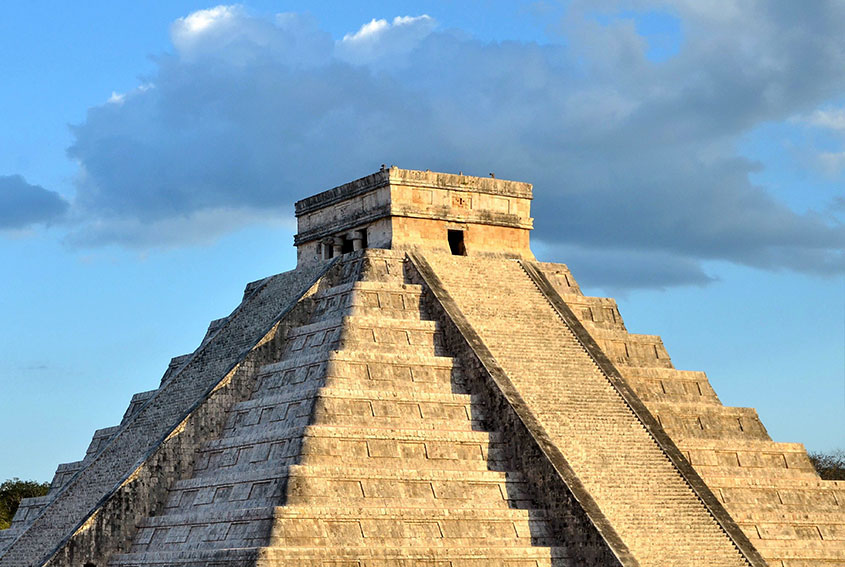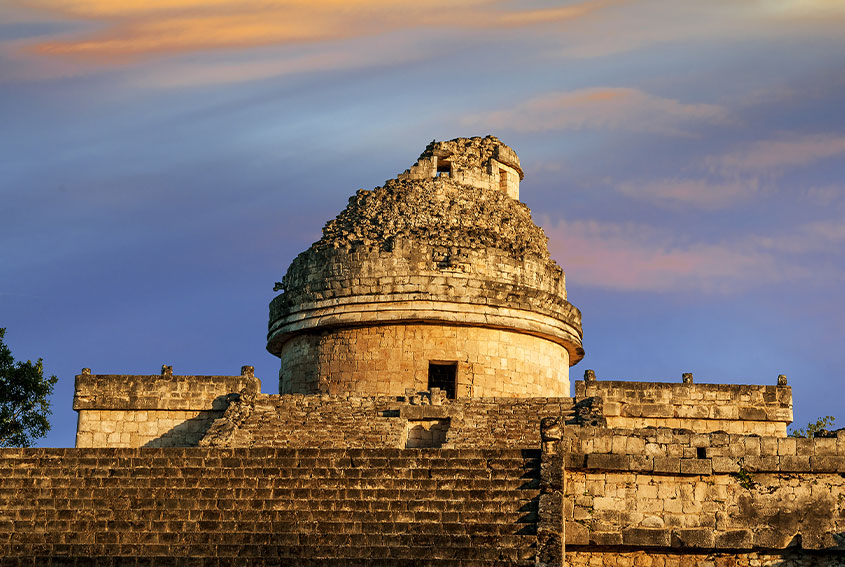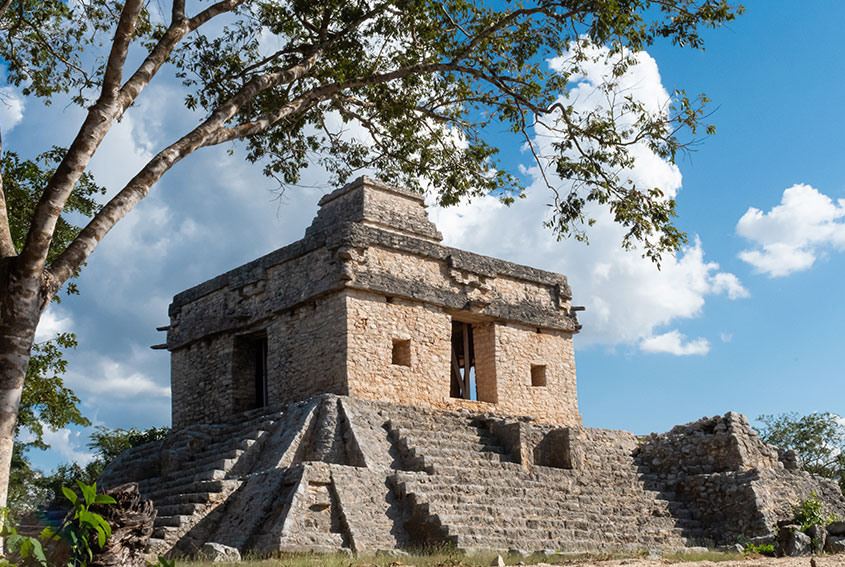A serpent that seems to slither down from the heavens at sunset. The ancient Mayan metropolis of Chichen Itza is still revealing its secrets. If you are vacationing in September, head to this ancient Maya metropolis to celebrate the fall Equinox on September 23 (also visible on September 22 and 24). You’ll see the famous Pyramid of Kukulcan transformed by a mysterious shadow, the return of an ancient god.

Also known as El Castillo, the 25-meter-high pyramid is a solar clock, aligned to catch the rays of the setting sun on the days of the spring and fall equinoxes in March and September. Triangles of light and shadow appear along the side of the north staircase and the undulating body of a snake forms. It merges with the head of a stone serpent at the foot of the building, creating the illusion of a gigantic reptile coming down from the sky and rippling across the ground towards the Sacred Cenote.
The snake symbolizes Kukulcan (also known as Quetzalcoatl in central Mexico), the feathered serpent god, returning to earth to give hope to his followers and heralding the spring planting season and in this case the fall harvest for the Maya.
The pyramid of Kukulcan was built between A.D. 650 and 800, with later modifications during the Itzae period of glory, possibly from A.D. 1000 to 1150. The earlier temples are deep inside the pyramid we see today. When archaeologists dug through tons of stone and earth to reach the inner sanctum, they discovered a chac mool statue, the enigmatic reclining figure with hands cupped to receive the heart of a sacrificial victim, guarding the entrance and a magnificent throne in the form of a red jaguar with jade spots and eyes. The jaguar was discovered with an offering of coral, sacrificial flint knives and a turquoise mosaic disc. Explorations and remote sensing in recent years indicate even earlier temples associated with the caves and cenotes that were held sacred by the Maya.
The pyramid also represents the ancient Mayan calendar as the number of terraces and wall panels coincides with the number of months in the year (18) and years in a calendar round (52), respectively, and the number of steps in the staircases, including the top platform, equals 365, the days in the year.
The Observatory
A short distance from the Pyramid of Kukulcan, the Temple of the Warriors, the Ball court and the other temples in the Great Plaza is the round tower known as El Caracol or the Observatory. It has a viewing platform and wells, which were used by ancient astronomers to mirror starlight, and it was aligned to catch sunsets and moonsets on both equinoxes and to mark the course of Venus.
Other buildings of note at Chichen are the Ossuary, the Akab Dzib, Las Monjas, the North Group and the earlier ruins in the forest known as Chichen Viejo or Old Chichen.
Pyramids within pyramids, cenotes deep under the sacred heart of the city and paths that seem to lead towards Xibalba, the Underworld, are some of the amazing finds in recent years. If you haven’t visited this majestic UNESCO World Heritage Site before or you did so many years ago, then perhaps it is time to book a trip and learn about some of the discoveries archaeologists have been making.
Dzibilchaltun at sunrise
Chichen Itza is not the only Mayan ceremonial center in the Yucatán to have temples with solar, lunar or planetary alignments. The doorway of the Temple of the Seven Dolls at Dzibilchaltun (13 miles north of Mérida) makes a perfect frame for the rising sun on the day of the Equinox.
Your Concierge can help you plan a trip to Chichen Itza. An alternative is to rent a car and explore the eastern Yucatan at your own pace, visiting Valladolid, cenotes and Balancanche Cave and even exploring the smaller Maya site of Ek Balam too.





